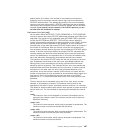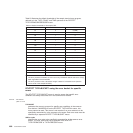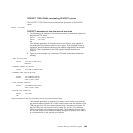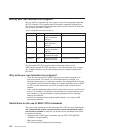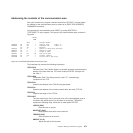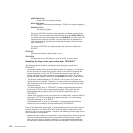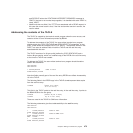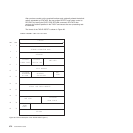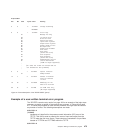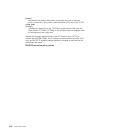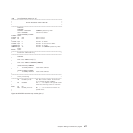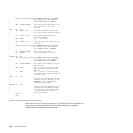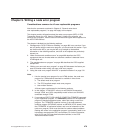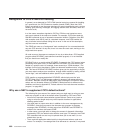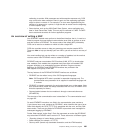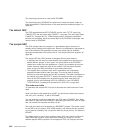Example of a user-written terminal error program
The “DFHTEP recursive retry routine” on page 476 is an example of the logic steps
necessary to design a portion of the terminal error program. In Figure 28 on page
477, 10 retries are provided for each terminal; however, the logic could be used for
any number of retries. The following assumptions are made:
USER FIELD A
(PCISAVE)
represents a 6-byte field in the process control information (PCI) area of the
TCTTE. This field is used to preserve the count of input and output from the
TCTTE when the first error occurs. These counts are contained in 3-byte fields
located at TCTTENI and TCTTENO within the TCTTE.
USER FIELD B
Displacement
Dec Hex Code Bytes Label Meaning
0 0 4 TCTLEPSA Storage accounting
RESERVED
8 8 1 TCTLEPFL Error flags
81 Message too long
84 TCT search error
85 Write not valid
87 Unsolicited input
88 Input event rejected
8C Output event rejected
8D Output length of zero
8E No output area
8F Output area exceeded
94 Unit check
95 Unit check
(should not occur)
96 Unit exception
97 Unit exception
(should not occur)
99 Undetermined I/O error
9F Invalid destination
(TCAM: no longer supported)
.
. (All codes not listed are reserved and are
. not intended for use by DFHTEP)
.
9 9 1 TCTLEPF2 Special indicator
01 dummy terminal
12 C 4 TCTLEPTE Address of terminal
entry for terminal
in error
16 10 4 TCTLEECB DECB/copy of line
when error occurred
60 3C 4 TCTLEOA For TCAM lines only.
(No longer supported)
Figure 27. Format description of the TACLE DSECT (part 2)
Chapter 8. Writing a terminal error program 475



